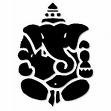

Ruler of bhava-6 = Budhan
Rashi - Gochara - Bhava - Graha - Ratna - Nakshatra - Amsha - Varga
- [Surya in bhava-3]
- [Chandra in bhava-3]
-
[Budha in bhava-3] = [svabhava]
- [Guru in bhava-3]
- [Shukra in bhava-3]
- [Shani in bhava-3]
- [Rahu in bhava-3]
- [Ketu in Bhava-3]

OM hrim krom aim grhanathaya budhaya svaha
Learning Pathway 3
communication & cohort
Bhava-3
भ्रातृbhratru = brothers, brethren, fraternizing
सहज sahaja sahotta = born with, co-borns, cohort
क्रम krama = sequence, footstep, step-by-step
पराक्रमparakrama = enterprise, marching forward
विक्रम vikrama = step, walk, way, course
तृतीय tṛtīya = third, the third part
मूलत्रिकोण mūla-trikoṇa
prabandhusthāna
steps, process, manner, method of handling
fashion, mannerisms
way of doing something
way of conducting business
way that something happens, sequence, style
manufacturing - handcraft
manual energy
management
3rd-from-any-lagna - 3rd-from-Chandra
the third house
Fratres
And he said to them,
"Therefore every scribe who has been trained for the kingdom of heaven is like a master of a house, who brings out of his treasure what is new and what is old."
~~ Matthew 52 [International Standard Version]
Identification with your mind creates an opaque screen of concepts, labels, images, words, judgments, and definitions that blocks all true relationship.
It comes between you and yourself, between you and your fellow man and woman, between you and nature, ...
~~ A New Earth 1948- philosopherEckhart Tolle
Plan ahead.
It wasn't raining when Noah built the ark.

BPL Comment
Q: what is the difference between bhava-3 vs. 3rd-from-3 = bhava-5?
A:bhava-3 = technician, while bhava-5 = politician.
-
If there are active graha in both 3 and 5, the Learner may be both a skilled detailed process manager [3] and also an entertaining creative game-player [5]
-
those who are born-together (saha-ja)
-
Steps and Sequences
-
Messaging
-
Mentality
-
Management
-
Meetings
-
Cohort Cousin Coterie
-
Commerce
-
Communication Cooperation
-
Committee
-
Ears and Hearing
-
Hearings [such as legal hearings]
-
Audio - Audience
3-administrative roles, case-management
3 commerce, project management, documentation
3-cohort, department-staff, process, instructional-group
3-business, notebooks, journalism, publicity, announcements, publications
3 mentality, teamwork. ensemble, management, administration, paperwork, committee, musical-band, siblings, media-messaging, writing, literary correspondence
3-songwriting and music production
Topics of Bhava-3
-
dvadamsha = 12 portions of bhava-3
- [Busy Bantering Budha] naturally activates bhava-3
- bhratru-pati-3 in Lagna vs. Lagnesha in bhava-3
- Budha + Other Graha
- Job Interviews
- Sahaja * Sahottha
- Krama * Vikrama * Parakrama
- Duschikya * Yodha (warrior)
the learning classroom of vikramasthāna-3 = ruled by Professor Budha
-
camaraderie
-
Commercial business
-
transactions
-
enterprise [parakrama]
-
business
-
tools - technology
Messenger-Message-Emissary
Angel-Evangelism
Instructions - Signaler-Signal-Enseigneur
Hasti: Manager-manual-manipulation
Crafter-Craft-Handcraft
high-frequency, micro-focused administrative tasks
-
company
-
coworkers
-
co-born
-
cousins
-
cooperation
-
collaboration
-
coordination
-
correspondence
-
committee
-
commerce
-
conferences
-
cohort
-
workgroup, sales team, sports team, musical ensemble
-
documentation, reporting, naarrative
-
programming,
-
sequence, script, software code
-
cooperative writing, group writing exercises
-
discussions
-
scheduling
-
schematics
-
planning
-
commercial business operations
communications-media , teamwork, ensemble, assembling, small-group interaction, sales, meetings, messaging, mentality
busy-ness, business, brethren
frequent short-term travels, tours, translation, scheduling, schematics, planning, publications, reports, advertising, announcements, annotation, administration
Vimshottari Periods of the Rulers of Bhava-1-to-12
Bhava-3 occupies an adversarial 6/8 angle regarding bhava-10, which means that the journalistic reports of Bhava-3 are often threatening to the entitled power structure of 10. In commercial business and government bureaucracy, management duties (3) are inherently adversarial to elite executive roles.
Benefits of having a weakened amsha-3
- The wisdom of the scribe depends on the opportunity of leisure;
- and he who has little business may become wise.
~ Ecclesiasticus (Sirach) 38:24 [Revised Standard Version]
The graha in bhava-3 emanate through
- cohorts
- teams
- ensembles
- retinue
- entourage
- workgroups
- department
- committees
- neighborhood
- vicinities
- collaborative entities
- transactional relationships
- companies,
- businesses.
Sermons, signs and Signals
- significance
- enseignment
- enseñador
Handcraft, manufacturing, smithy
semiotics
communications and cohori
meetings and messages
mentality, instruction, explanation, training, craft
Saha = with - co - com- con-
- Cousins
- Coherence of the Cohort
- coordination of the communicants
- collaborators in the conversation
Playmates, neighbors, Vecinos-Vicinity, Ensemble , team, business department, administrative units, Equipe
Signals, Hearing , reports, announcements, publications, text, journalism, naarrative,
Courage, mental Health, bravery
shared mentality, cooperative groups
Turn-taking
Sibling group, Ensemble, cohort, team or Band
management (micro-man agement),
the hands , man-ual skills, mani-pulation, com-mand + mand-ates,
gesture and word, conversation, signaling, instructions, explanations,
publications, printing, plans
Brethren, business, bravery,
meetings, media, message
The Interior Narrative
reporting, The News, gospel (good talk) messengers, angels, evangelism,
commerce, communication, congress
siblings, cousins,
cooperatives, co-workers, Team-mates
- those whom one is with (saha)
- mental narrative
- the company one keeps
- cohort , collaborators, cooperators
- altogether - ensemble
Communications, courage, decisions,
- hands, writing
- siblings, neighbors,
- teamwork, ensemble performance
- business administration, management
- meetings, planning, calendars,
- commerce, transactions
- media-messaging, publication, announcement, cinema
- sales, marketing,
- training, instruction
- mentality, mental health , the inner narrative
- conversations, dialog, gesturing, signification, signaling

RELATIONSHIPS within the Team - 7th-from-3
The astrological picture of siblings, media communications, writing, or the thyroid gland, inter alia, is formed via:
sa // sa-ha / same / with / in the presence of
The astrologer's initial picture of Saha-ja - Naturally, together
-
3rd house from kundali indriya-lagna
-
3rd-Lord in radix
-
3rd- from- Chandra = emotional attitudes and underlying emotional valence which influences all communication
-
3rd-from-Budha = fundamental mental attitude, nature of the overall mental narrative and embedded expectations
-
3rd-from-3rd, or Putra bhava = personal intelligence, charm
-
arudha of bhava-3 (find the graha which is bhratru-pati-3 and count 3 steps forward from vikrama-pati-3). Arudha of bhava-3 *A-3 * Shows what other people think about your communication skills and task-management abilities. It may be an illusion and not true in your own view, but A-3 is a good indicator of the aura of articulatory skill that other people perceive about you.
-
Radix graha in Mithuna - Dvamdva - generally any graha in Mithuna rashi will try to reach its goals via narrative, messaging, communicative modalities.
-
3rd bhava counted from Mangala is influential in communicative group settings. The reason: Mangala = one of the karaka -graha for Sahaja bhava, particularly Kuja represents brothers. If you had brothers growing up, or you work with adult males in a business team, mangala shows the jostling, sporting, competitive behavior of males in groups. (If you have [uchcha] Kuja, you are the alpha-male type; jostling turns to conquesting. )
-
Radix bhratru-pati-3 within navamsha; lord of the 3rd navamsha within the radical kundali
-
3rd navamsha itself - what graha reside there?
-
Kundali-bhratru-pati-3 within Drekkhamsha = D-3, the 3rd harmonic varga = narrative mentality and siblings = the childhood environment which shaped the adult communication skills
-
particularly check the 3rd Drekkhamsha and the radix bhratru-pati-3 role in D-3

Vocabulary for भ्रातृ bhrātṛ
from Koeln Sanskrit Lexicon - www.sanskrit-lexicon.uni-koeln.de
भ्रातृ bhrātṛ bhratru = brother, fellow, sibling
-
A brother = often used to designate a near relative or an intimate friend, esp. as a term of friendly address
-
(dual case) brother and sister
-
[Cf. Zd. {bratar}; Gk./ Lat. {frater}; Lith. {broter-elis}; Slavonic {bratru}; Gothic{brothar}; German{bruoder, bruder}; English {brother}.
Sahaja
-
born or produced together or at the same time as (gen.); congenital, innate, hereditary, original, natural
- birthplace, home
- Always the same as from the beginning; natural state or disposition
- name of the third astrol. Mansion
- emancipation during life
- innately honest
- naturally dirty, spotty by nature
- A natural friend (as a sister's son, cousin etc.)
- fond or tender by nature
- A natural enemy, one hostile by birth (as the son of the same father by another mother, the son of a paternal uncle etc.)
- One who is born neutral or who is naturally neither an enemy nor a friend, acommon acquaintance, friend, unconnected by birth
क्रम krama = success, series, steps, method, sequence
-
A step; the way
- going, proceeding, course; in regular course, gradually, by degrees
- A position taken (by an animal.) before making a spring or attacking
- uninterrupted or regular progress, order, series, regular arrangement, succession
- "in the order of the castes "; hereditary descent; according to order or rank or series; method, manner; custom, rule sanctioned by tradition
- (in drama) attainment of the object desired
Para-krama =
-
doubling the other ( second) letter of a conjunction of consonants
- bold advance, attack, heroism, courage, power, strength, energy, exertion, enterprise
- going out or away
- knowing the strength (of an enemy)
- showing courage or strength, exerting power
Vi-krama =
-
The absence of the Krama,
- A step, stride, pace; a foot
- going, proceeding, walking, motion, gait; course, way, manner; in regular order
- valour, courage, heroism, power, strength
- to display prowess, use one's strength); force, forcible means; an act of prowess, feat of valour
- The 14th year in the 60 years cycle of Jupiter
- The 3rd astrological house
QUOTATION from Chögyam Trungpa "Resting in Shamatha" in The Path of Individual Liberation : Volume One of The Profound Treasury of the Ocean of Dharma , p. 232
"In this samsaric, or confused, world, most of you have grown up physically, but psychologically you are very young.
If your mind is so adolescent that you have no control over it, what you are taught is completely wasted, because you have not heard it - not because you are stupid but because you are so distracted.
The discipline of meditation is the best way for you to work with your mind, so that your mind and your body can be properly coordinated."

Lemma
[Sahaja] from V.S. Apte,
practical Sanskrit-English Dictionary,
p. 1551
-
Brother of whole blood
- born together
- A natural friend
- The natural state
- "saha" = together
Lemma
[Bhratru[ from V.S. Apte,
practical Sanskrit-English Dictionary,
p. 1216
-
Brother
- intimate friend or relation
- A near relative in general
- A term of friendly address (my brother)
QUOTATION from the writings of Pt Narasimha Rao www.vedicastrologer.org
-
Bhava-3
- Arudha-3
- 3rd-from-Mangala
- weapons
- boldness = 3rd from Kuja
- how boldness is perceived = 3rd from Arudha Lagna
- Writings and publications
[begin quote] " The 3rd house shows one's boldness.
The 3rd house from lagna and the 3rd house from Mars show one's true boldness and the 3rd house from AL shows how bold one is perceived.
In addition, a3 shows the maya surrounding one's boldness. It shows what drives the perceptions of people about one's boldness.
The weapons one possesses may drive those perceptions and A3 may show one's weapons.
The 3rd house also shows one's communication skills.
The 3rd house in D-24 (chart of learning and knowledge) and D-10, (achievements in society) may show one's writing skills.
A3 shows the maya associated with one's writing skills. The Learner may have excellent writing skills, but not write any book.
- In such a case, people may not really appreciate one's writing skills.
- The Learner may be an average writer, but end up writing 20 books.
- In such a case, people may perceive him as a great writer.
- Thus the exact books written by one decide the perceptions of the world about one's writing skills.
- So A3 in D-24 and D-10 may show the books or articles written by him.
In this author's D-10, for example, a3 is in Pisces. This can mean that he will be known for some books on sattwik and traditional subjects and astrology certainly fits the bill." [end quote]
~~ Pt. Narasimha Rao
BPL note: Similarly, the A-3 of D-10 for the famous 20th-century Jyotishika author B.V. Raman was Kanya - Parthya. Shri Raman was famous for his Budha-driven argumentation style that provided learners with copious examples, clear and detailed explanations, and an exemplary role model of professional service.
Sarga-7, shloka-2
" From the third house should be examined all matters relating to
courage, brothers, servants, journeys and father."
Sarga-9, shloka-3
" Younger brother or sister, valor or courage, throat,
Appetite, ornaments, talent [or otherwise]
should be understood from the third house. "
" Duschikya (the third house):
Uras (chest), the right ear,
army, courage, valor, prowess, and brother
are denoted by the third house. "
" From Sahaja Bhava, know of the following: valor, servants (attending, etc.),
brothers, sisters, etc. initiatory instructions (Upadesha),
journey, and parent's death. "
Satyajatakam, sarga-1, shloka-16
" The third house signifies brothers, courage, bravery, fear, voice, ear, fruits, father's death,
strength, dress and mental stability and firmness."
BPHS Sarga-7, shloka-39-43 " Whatever has to be known through Sahaja Bhava be also analyzed through the 3rd from Mangala."
Situation at time of bio-death, measured from Sahaja Bhava 8th-from-8th
~~ BPHS Ch 44, shloka-2 5
"Chandra in Sahaja Bhava will cause death due to tuberculosis ...
Guru in Sahaja Bhava or giving a drishti to Sahaja Bhava will cause death by swelling or tumors " ...
If Sahaja Bhava is occupied by a benefic, death will be in a lighted place (like a shrine);
[but] if Sahaja Bhava is occupied by a malefic, death will be in darkened places " [whereas]
Mixed occupation of Sahaja Bhava will yield mixed results with regard to the place of death."
"... death of father and mother should be considered from the third house.
-
If ninth house be for father, seventh from ninth , third, would be the maraka or death-inflicting house for father.
- Fourth house is for mother. Twelfth from the fourth , the third, is the house of expenditure and losses to the mother ."
" Wounds, weapons, fire, and thirst will cause death through Mangala in Sahaja Bhava."
BPHS - Sarga-33
" Consciousness will prevail at the time of death if Guru or Shukra are placed in Sahaja Bhava."
BPHS Sarga-33
Q:Why does everything turn out so lousy for me? Nothing every works out. I don't doubt my own intelligence but the pattern has repeated now,
so many times,
that I'm frustrated and disgusted with myself.
Even my co-workers can't stand me. I think its the planets,
the way they are arranged in the Kundali. I don't see any way out.
A:
Rahu+Surya+Budha in rashi of Shani (Kumbha - Ghata ) in bhava-3 show an egoic-mind attachment to the mental state of depression.
Plenty of people get absolutely stuck in a mental victim state and simply refuse to release their suffering due to egoic-mind identification [Surya] with the pain.
"That's who I am. I'm a depressed loser. My life is a continuous, unbroken narrative of failure. I am defined by failure, loss, grief, and pain."
(Surya = self, consistent, comprehensible, whole, unbroken)
Grief is addictive.
An substance-use disorder is a behavior which is so dominating and compulsive that it prevents the possibility of other behaviors. The Learner may be addicted to alcohol, drugs, sex, food, or sleep. The Learner may also become psycho-mentally addicted to grief, so that NO OTHER NARRATIVE can develop.
The Learner may become egoic-mind identified with the act of delivering the"report" (3) about racial discrimination, having a handicap, being raised poor, alcoholic parents, other suffering and indignity.
The constant litany of such a grief-addict rehearses and reiterates the 100 reasons why life just isn't working for them.
No wonder the co-workers are complaining.
Oy.
Sounds crazy (3) and it is indeed the very definition of crazy, but that is the task with this combination.
If you want improvement, it will be necessary to pry oneself away from the internal narrative (3) of chronic depression.
This repeating, self-defining loop is mentally (3) predictable and the routine of the negative repetitions is comforting . It creates a sort of a mental-drug substance-use disorder. It is difficult to un-hook from the mental-habitual behavior, especially because this is not a physical action, and few other people know what is happening within the traffic patterns in one's own discursive mind (3).
However, despite the social invisibility of the task, self-inquiry into the narrative script and re-writing of the narrative script is the best way to reestablish your sanity.
Depressive narratives put the brain into a comfortably miserable state by running a familiar loop of repeating sad ideas related to disappointment, loss, grief, and sorrow. You can keep running that loop if you want but the results will be very predictable.
There are dozens of outside technologies that can help alleviate depression in a natural, effective way. Bach Flower Remedies are my personal favorites.
Several homeopathic remedies when properly prescribed can alleviate depression. Sandalwood essential oil also relieves guilt * which is a major source of depression.
However, none of these remedies will be in the least effective if the person remains mentally attached (3) to the victim state.
Have a look at your family. Who else is depressed and who else is repeating a litany of reasons why life is so miserable? Often one will get hooked into 'validating' this family member by repeating their model.
You have the self-inquiry skills to do this work. It takes WORK to un-hook. The work will succeed if the person expects it to succeed. The originating thoughts and negative convictions must be rooted out.
[Surya-Kumbha] is often called immoral or socially irresponsible, precisely because this placement constructs an egoic-mind membrane that blames "the system" . It is quite natural and attractive to this weakened Surya to blame the kundali, blame the stars, blame the cosmos.
However, Rahu and Budha are both strong enough to function as two horses of a chariot that can drive the mind out of wallowing depression and into genuine science [Kumbha].
Indeed you have the moral will to accept responsibility for your own thoughts , but Jyotisha opinion hardly matters in this judgment. What does matter is your personal courage (3) and willingness to enter into battle with one's own inherited (8th-from-8th) negative assumptions.
I am a huge fan of your webpage. So,
I have this question.
Interviews or Job interviews fall under the portfolio of 9 bhava or 11 bhava ?
I am confused because at least in American College system job interviews are extension of networking
etc etc.. So,
is it 11th ?
When you apply for a full time job as senior,
it is more connected to campus recruitment etc. And also we have interviews for MBA programs. You are being interviewed to become student. So,
is it 9th ?
Please kindly answer me when time permits.
Keep continuing the good work. I learn a lot
Thanks
Interviews or Job interviews = bhava-3 and the ethno-emotionally motivated evangelical communicative cohort instructive descriptive team-working administrative managerial announcing publishing reporting explanatory conversational lyrical messaging 3rd-from-Chandra
For Jyotisha analysis purpose, the interviews are different from networked relationships because they are 'business meetings' and interviews are also communication tasks, which are part of the portfolio of Budha's svabhava-3.
Every conversation, every letter, every phone-text, every resume-CV is a communication event by which you provide-and-receive information to the interviewer (perhaps several interviewers). In that event there is always an emotional component. The people who are communicating mentally-verbally, how are they feeling about that conversation? To find out about the feelings, which are very influential in the success of any type of communication, look to the 3rd from Chandra.
You're right, bhava-11 and all of the many 11th-from angles of the Jyotishavidya nativity
represent social networks, which are voluntary communities of people who exchange commodities, ideas, and services within a large group. bhava-3 = 4th-from-11 which means that the basis (4) of the large networks (11) is actually created by the 1-to-1 (or small group) conversations which occur in sahajabhava-3. Everything in the world of professional gains (11) starts with personal conversations (3) before it grows into a big economy (11)
Before adulthood really begins (age 31) our communication skills and style are learned at home with siblings-neighbors and then later refined at school with our class cohort. The adult workplace = generally a repeat of the home-school siblings-cohort scene.
So, to find out if you are a clear, confident, and charming communicator, look into bhava-3 of the kundali to find the mental-articulatory behavior and look into the ethno-emotionally motivated evangelical communicative cohort instructive descriptive team-working administrative managerial announcing publishing reporting explanatory conversational lyrical messaging 3rd-from-Chandra to find the emotions which you tend to feel during interviews. (The person interviewing you will also perceive your emotions so it is a good idea to know what you are projecting.)
Finally, remember to check 3rd-from-3rd (bhava-5, personal intelligence) and 3rd-from-3rd-from Chandra (personal emotional intelligence, intuition, smart hunches). 3rd-from-Budha can indicate a fundamental, steady-state mentality which is so deeply embedded in the worldview that it influences absolutely everything, yet 3rd-from-Budha is often not recognized as a major shaping force of attitudes and expectations. It is a very good idea to check into the behaviors of 3rd-from-Budha to see what you expect from the world!
However, in terms of what the world expects from you -- as a professional contributor to society -- look to the 10th navamsha and the function of the lord of the 10th navamsha in the radical kundali. Lord of the 10th navamsha is an accurate indicator of your professional gifts and abilities, and of the role you are destined to play in the greater advancement of civilization.
Wishing you a happy and productive interview season!
Sincerely,
Barbara Pijan Lama, Jyotishavidya

Fred Meyer grocery shop in Oregon
in determining success of job interviews and formation of job
documents.
You did hit on the nail with"resume/CV"and"personal conversations (3) grows into big economy (11)!
I know someone in my close circle who is exceptionally smart with lot of contribution to technical journals.
But, her resume was miserably bad. And failed almost many interviews. I know her"budha" was good. I was wondering,
why couldn't she market herself well. So,
all this while,
I was perplexed.
Now,
after,
iread your article. I went back and checked that chart.
The concerned person has "Shani" in 3 bhava. So,
iguess, her resume was "plain" ,
as you always put for Shani.
bhava-3 Agents and Environments
-
sales, marketing, advertisers, schedulers, handlers , managers, management,
- announcers, messages, messengers, angels, evangelists, media production (films, internet content, video, visual arts, music, etc.) planning, short-journey services (holiday and business travel),
- seminars and conferences, editing, technical skills training that has commercial utility;
-
information-packaging; skilled work with the hands including painting, scribe or transcription,
- tool-using,type-setting, inks and literary press,
- writings, reports, publications, declarations and announcements
bhratru-pati-3 in Lagna vs. Lagnesha in bhava-3
Third lord in lagna = Daily business controls the personality.
-
personality integrity conforms to repetitive daily business, administration of details, and cooperative teamwork process. Native is socially identified with siblings, cousins, work-group, neighbors, business communications, and small-scale administration of shared small-group concerns.
- Nature of conformance judged by characteristics of vikrama-pati-3.
E.g., if
-
bhratru-pati-3 = Budha, naative mainly talks about their daily business (follow-through would depend on other graha in lagna).
- bhratru-pati-3 in a rashi of Shani = conservative administrative practices, limited material scale.
- bhratru-pati-3 in a rashi of Guru = expansive, inclusive and optimistic thought process.
- bhratru-pati-3 = Shukra, the details are highly aesthetic, communications affectionate.
-
bhratru-pati-3 = Chandra, emotional attachment to the sibling or team group, nurturing repetition of conversations, small projects, administrative planning tasks builds group emotional connection. A maintainer. et-cetera.
Lagnesha in bhava-3 = Personality controls the daily business.
-
Native is a born business administrator, with natural talents in all commercial behaviors such as sales, marketing, public relations, advertising, planning and execution. Success at all detail levels but of course depending on the nature of the graha.
The strongest case is [uchcha] Kuja which makes a captain of industry for Vṛścika lagna. Also [uchcha] Shani or [uchcha] = [Budha in bhava-3] = [svabhava] = very positive agents for business success. May not conform to the dogma of conventional business practice due to the infusion of personal style into the communications transactions.
Nature of personalized expression of business practice is to be judged by characteristics of lagnesha-1 . For example,
-
If lagnesha-1 = Shukra-Singha or Dhanau, naative expresses a feminized enthusiasm, full of sweetness and bright optimism. Loves company and does well in feminine-targeted business.
-
Any graha in Mithuna, celebration of communicative media and sexual magnetism as the ultimate sales tool.
-
If lagnesha-1 = Guru-Kumbha or Vrishabha, liberal and inclusive type of business practice, highly optimistic planner and strong identified with their group.
-
Any graha in Simha, finds expression in the global marketplace esp. education.
-
If lagnesha-1 = Shani in Meena or Mesha, the Learner is a highly disciplined and punctual but may lack social communication skills and mental optimism. A dedicated worker but not a visionary :)
In the mineralized embodiment, sahaja Bhava signifies the body parts most influential in social communication - including the thyroid gland , energetic seat of the fifth or"throat" chakra, the core of sound production.
-
hands
-
chest
-
breasts
-
Arms, upper limbs
-
neck, throat
-
shoulders
-
upper ribs
-
ears, esp. right ear
-
thyroid gland
one older male sibling and one younger male sibling - another indication of the accelerated level of masculine energy in uchcha Kuja occupying bhratru bhava.
The siblings are also top achievers in their professional fields, reflecting the tight interaction between [uchcha] Kuja and Shani. This chart came to the Jyotiṣika's attention because the client was suffering unhappiness in the period of retirement from professional life. Despite being a multi-millionaire, enjoying the pleasures of family and travel, and most of the forms of happiness that money can buy, this native was restless and increasingly critical of his home surroundings (nativity = Kṛttikā - Pleyades Chandra).
Jyotisha suggests that the extraordinary strength of this Bhratru Bhava's middle-child programming gives a psychological motivation. the Learner must continue to compete with his (internalized) siblings. He continues to compete for his dear mother's attention (Kuja controls Moon)."I have to be better" says his inner child ."In fact, to be assured of mom's permanent loving attention, isimply have to be the Best."
He is programmed to pursue the Best ([uchcha] Kuja mutual drishti to [uchcha] Guru). One cannot expect conventional retirement in the sense of disengagement from daily business to be a pleasurable Learning Pathway experience. He must continue to work in active competitive business communications, or else vigorous competitive sport where he can achieve prestigious titles and financial rewards. Otherwise the Learner may be unable to find productive outlet for the amazing [uchcha] Kuja, and he will be unhappy.
-
On the challenging side, bhava-3 is the first place to look for the mental health issues that occur so commonly in modern society.
-
Depressive thinking, marked by negative expectations and unresponsive daily interactions with the family and work-mates, is often signified by Shani in bhava-3 or a harsh Shani aspect upon Budha.
-
Frenetic, non-stop talking (Budha dysfunction); anxious over-communication (Budha-Moon); or dominating communicative behaviors (influence of Kuja) will all be noticed in bhava-3.
-
90% of human daily communication is completely scripted . Repetitive, scripted communicative interactions within the group are consoling, bonding, confirming, unifying, and validating.
-
The conversations in one's own head are just as repetitive and just as determinative of mental health or illness as are the external, verbal or gestural communications. Internal loops of repeating conversations are either validating or excluding, optimistic or pessimistic, happy or sad.
-
The se internal and external conversation-dances which are performed millions of times in the lifetime are the primary determinants Of mental health and daily happiness.
-
Look to bhava-3 for communicative skill in"thinking and talking" , for business acuity and for basic mental health .
-
Conditions of bhava-3 along with character of Budha will determine how one thinks and talks. The"thinking" of bhava-3 is small-scale daily business thought, which consists of the processing of largely repetitive, scripted, call-and-response communications throughout the busy active day.
-
Distinguish from the"thinking" of bhava-9 which is grand-scale philosophy and innovative, contemplative, reflective thought.
-
Natives with strength in Parakarama sthāna may describe themselves as innovative or artistic, but bhava-3 is not an essentially"creative" environment. Rather the mental processes of bhava-3 are"elaborative" of the basic human behaviors of Organizing goods and information , and developing"group mind" with shared goals and plans for action.
-
One step past dhana bhava that rules the core blood family, Sahaja bhava includes siblings, step-and-half-siblings, cousins, and playmates. In adulthood, bhava-3 signifies the collaborative peerage * paréage of co-workers, team-mates, castmates, classmates, neighbors, and other adult equals who share one's basic mental framework and with whom one can co-operate successfully toward realization of shared goals.
-
bhava-3 is practical, pragmatic, repetitive , small-group oriented, task-driven, highly responsive to the immediate environment, and circumscribed by the closed circuit of tribal interactions.
-
In contrast to the slow and pondering nature of philosophical thought in bhava-9, communications of bhava-3 are fast-paced because their content is defined by the tribal culture, and it is known in advance.
-
Sahaja bhava is the svabhava of business administration and operations management. It rules most commercial and administrative processes such as inventory management, time management, and every possible communicative instrument such as facsimile, letters of credit, bank accounting, sales behaviors, advertising and public relations campaigns, etc. Ad inf.
-
the Learner blessed with a powerful bhatru bhava is able to form strong team relationships by quickly locating the shared mental images and talking incessantly about the process while doing it.
-
This native is able to repeat the sibling bonding process and expand it to build business teams with very high levels of social agreement.
-
one is the jewel of their neighborhood, business department, and family reunion.
-
Strength in bhava-3 indicates positive communications ability . In a rashi of Budha, multi-lingual and multi-cultural communications knowledge.

Thick-billed murres by Greg Thomson (2019)
US Fish and Wildlife Service
Public Relations, Explaining Oneself
-
bhratru-pati-3 defines not only what tends to be"on one's mind" in the sense of Abudh, what one is attending to,
-
but also the organizational and self-publishing approach which one takes toward explaining oneself to others.
-
All major acts of the hands are encompassed within Bhratru sthāna.
-
Gesticulating, the physical movement of writing, sculpting, painting, shaping, weaving, et-cetera.
-
Thus Sahaja bhava includes literary correspondence, and as fortunate lawful result of negotiation 9th-from-7th, the signing of agreements.
-
The creative inspiration and authorship belongs to putra bhava. Successful authors must have strong third AND fifth houses, as well a fortune through dharma bhava (from lagna or from Chandra) because dharma bhava rules book publishing.
-
Managing, managers, and management are functions of the hands (" manus " hand; in the digital era. 'virtual hands' ) and managers with strength in bhava-3 tend to be very"hands-on"
-
Also,"handlers " in the sense of paid managers who arrange one's travel schedule and communications.
Skilled Crafts, commercial Capabilities
-
bhava-3 = skilled crafts and training; the attitude toward craft and authentic skill set of the Learner can also be found in Sahaja bhava and its planetary ruler
The natural extension of human physical hearing, gesticulating, and writing into the broad realms of civilization
=
the entire sophisticated field of cultural communications.
In modern parlance, krama bhava profiles one's relationship to the vast apparatus of media-messaging
Active graha in bhratru bhava shows skill and ability in sales, marketing, advertising, planning, public relations, getting along with customers, giving and following instructions, entertaining, short-term commitments, business travel, and all the day-to-day idea juggling that modern business thinkers undertake.
As opposed to short journeys of a few hours or days as found in yodha bhava, dharma bhava profiles long travels lasting many months. Similarly, as opposed to practical short-term corporate or vocational skills training as found in Sahaja bhava, dharma bhava indicates long-term philosophical education, lifetime intellectual development, and substantial mastery of the studied subject.
Mental-gestural experiences encompassed within Bhratru Bhava
Meetings, teamwork, messaging, mental tasking, telecommunications, telephone, television and other image delivery transactions, graphical user interfaces, collaborative ventures, musical bands, ensemble performances, conversations, written text in every form, and all the complex communications technology of modern business.
Careers in managing animosity, debt, and disease
Careers in conflict-management such as social services, bank loans, medical/dental, criminal law et-cetera. usually involve remarkable amounts of administrative paperwork and constant group meetings.
These careers involve working primarily with people from one's own cultural value set (2nd-from-2nd). Coworkers will agree on values for basic human dignity and human rights; basic values for money and financial management; basic definitions of disease/health; and basic historic cultural definitions of what is a crime and how to manage/contain criminality.
Without strong fundamental agreements on cultural values, the extensive group conversations indicated by bhava-3 are not possible. bhava-3 signifies administration, paperwork, business meetings, andrecord-keeping, along with continuous articulation of policy and planning efforts.
तृतीय [the third part] = local not a global domain.
bhava-3 is not concerned with grand philosophy or large-scale scholarly inquiry. bhava-3 operates within a pre-established set of cultural values. Natives with strength in bhava-3 are charged to perpetuate the values of their people through administrative small-group process.
Natives who find their professional career in conflict-management specialties (banking, law enforcement, criminal advocacy, social services, public medicine, etc) should have an empowered and beneficial graha such as lagnesha+ vikrama-pati+ karmesha-10 , or another auspicious combination in Sahaja bhava.
QUOTATION from BPHS, sarga-24, shloka-2 7
" If Sahaja 's lord is in Sahaja Bhava ,
the native will be endowed with happiness through co-born
and will have wealth and sons,
be cheerful, and extremely happy.
Sibling Order
Bhratru Bhava marks specifically the immediate younger sibling. Immediate older sibling is seen in labha bhava (bhava-11) and the 11th lord. To find the profile of a specific sibling, count odd houses in this way
-
immediate younger sibling - house 3
-
next younger - 3rd-from-3rd = house 5
-
next younger = 3rd-from-3rd-from-3rd = house 7
-
etc.
Immediate elder sibling = house 11
-
next older - 11th-from-11th = house 9
-
next older = 11th-from-11th-from-11th = house 7
-
et-cetera.
Yes, if you are in the middle of a big sibling group, there will be powerful resemblances between the oldest and the youngest extremes.
Saha-ja bhava
- saha = with
- ja = born
- 3 = the cohort with whom one coheres
- 3 = with whom one is born
3rd-amsha being weak or strong, with a supportive, or oppressive ruler, determines the positive or negative role of siblings (and close neighbors, close coworkers, possibly close sibling-like friends) in the person's life.
Birth order is a known factor in shaping human self-concept. Psychologically, bhratru bhava tells us how much the Learner 's birth order position within his sibling group determines her/his life experience.
For some people, birth order is the determining feature of their personality. For others, birth order (and other details of sibling relationship) exert only a mild positive or negative pull.
-
Eldest children by and large follow the psychological patterns of their parents, tending to choose similar occupations as the same-gender parent, also repeating the same struggles and carrying the same expectations of life.
-
Middle children typically work extra hard for recognition, and are often convinced very early in their lives that unless they do something quite extraordinary they will not be worthy of the attention they crave. Middle children therefore are notably ambitious and frequently have deep performance anxiety to match.
-
Youngest children Typically, relax and receive. They have high permission levels and don't work too hard - Yet, they are often just as successful as their other siblings. The trick with them is their willingness to receive. They fundamentally expect to be loved and taken care of - so, as a rule, they are! Only children are Typically, amix of oldest-youngest behavior. Importantly, all three birth positions can be very successful. Only the style of their approach, fervor, and expectations will vary according to birth order.
Birth order position will be important in his development because bhratru bhava and other significations for brothers (such as 3rd-from-Chandra) are powerful. The list of positive sibling significations includes (but is not limited to)
-
Budha, lord of 3rd-from Chandra, shares Mangala's house yuti Dharmesha-9 Chandra
-
Radix bhratru-pati-3 Shani is also a rising [Yogakaraka] in navamsha.
-
However, navamsha Kuja is a miserable planet for Kanya indriya-lagna in D-9; signifying longer term degradation of physical vitality because Mars is radix lagnesha.
-
Also Chandra is handicapped in Ari Bhava, making polarizing catalysis = mother-trouble
Clearly, this man with Vṛścika rising and lagnesha uchcha Kuja in bhratru bhava receiving drishti of [uchcha] Guru and parivartamsha with bhratru-pati-3 Shani will be profoundly influenced by his siblings, particularly the immediate younger sibling.
Profile of Influential Younger Sibling
Kuja is a highly masculine planet. The immediate younger sibling has abundance of high-function sports and competition energy. [uchcha] Kuja also makes a great corporate businessperson.
Often bhratru- karaka Mars occupying His own house gives karako bhavo nashto , which can actually destroy the contents of the house. However Kuja has so many favorable indications is the exalted lagnesha, it is quite the opposite - siblings are extremely influential.
Karako bhavo nashtoin general applies only to planets in their own houses. Thus the destructive powers of Kuja/3 would be most noticeable in Mesha or Vṛścika rashis.
Because of Kuja's strength and centrality in the radix - lord of Chandra and lagna, in drishti angles to his own Professor Shani and Chandra's tenant [uchcha] Guru - this native's sibling position -- whether eldest, or middle, or youngest -- will encourage his competitive instincts and powerfully shape his destiny.
the Learner with [uchcha] Kuja as lagnesha occupying bhratru bhava is therefore exceptionally motivated to fulfill the conditions of his birth order . Here is a middle child who works extremely hard to distinguish himself. [uchcha] Kuja is of course the karaka for stunning success in competitions of all kinds - but particularly, because Kuja is exalted (oddly) in Saturn's sign, [uchcha] Kuja gives remarkable achievements in commercial business.
So, we can surmise that this fellow is a very, very hard worker. He craves success. He exhibits tremendous courage, bravery, aheroic stamina, and both tactical and strategic intelligence. These are all qualities of bhratru bhava - competitive skills honed within the internal competition of the sibling group.
To verify that his True, internal psychic viewpoint or dharma" is seeing himself as an exceptionally skillful and diligent worker (emphasis on the diligent due to Shani lord of Kuja) let us examine the lagnesha via navamsha-lord method.
Kuja occupies a navamsha of Shani, so indeed Shani in radix dominates the Learner 's self-concept regarding his position in the world. He sees himself (dharma = viewpoint, perspective) predominantly as a worker on the material plane, handling confidential matters (Scorpionis) with aggressive skill ([uchcha] Kuja). The parivartamsha yoga between lagnesha and his "dharmic" Professor Shani is highly benevolent
for the specific portfolio of Shani. The Learner may be highly successful on the material plane.
dignity of leadership on behalf of the least powerful
The full circle of those Naturally, together includes a wide variety of people with whom we form temporary sibling-type relationships. These friends and acquaintances were no doubt our siblings in other lives. In the current life, we find an easy, comfortable understanding with them.
3 = 10th-from-6th , the dignity of leadership of the lowest workers and ministry of the dispossessed. 3 also = 6th-from-10th , the nearly endless petty administration which accompanies executive roles in large hierarchical organizations of government bureaucracy and corporate pyramids.
3 profiles the dignity of providing a lawful environment for service workers. These servants may be public servants in a civic setting; servants of the house such as babysitters and repair workers; or direct reports in a corporate office. All of them are performing tasks. In cultures where class hierarchies are still very rigid, 3 represents the dignity of one's housing staff (butlers, housemaids, cooks et-cetera.) and the prestige they gain from serving in one's business establishment.
One born with [uchcha] Guru in bhava-3, for example, = likely to acquire many pleasant servants who remain loyal to him/her for a lifetime.
He with a generous and friendly Sahaja bhava is the dignified and respectful boss that people like to work under. He supervises and communicates well with office help and home-repair contractors. Natives with malefic influences on the third house must pay extremely close attention to the affect which negative communications style is having on their underlings! 3 = 12th-from-4-household = may indicate loss and dissolution of the home-base. Challenges to Sahaja Bhava my show shoddy home repairs, disenchanted support staff, or thieving servants.
Mental Attitude/State of Mind
Although putra bhava is the seat of intelligence and a stronger indication of genius, sahaja bhava represents the basic mental balance and practical mental skillsrequired for daily task management .
Along with general mental capacity, mental strength and vitality, sahajabhava also indicates courage, stamina, and force of will. The sum total of effects on Bhratru sthāna reveal one's overall State of Mind.
A supremely powerful third bhava may show heroism, if Mars or Sun is lord. Conversely, ideologues and dogmatic thinkers are also found here when fearful aspects from Saturn or an agitated Mars or Rahu are present.
2nd-from-2nd = one of the bhava that can represent higher education. It is quintessentially the bhava of the student attending classes. Professor Shani occupies a comfortable angle from Bhratru-bhava may show the perpetual student whose perfectionism [Shani] makes them return to basic studies many times in the course of a lifetime. Mercury's effect on Bhratru makes the conversation witty; native is a successful if not profound student; interests will lie in commerce and communication arts rather than religion or humanities.
An academic career entails good effects on both Sahaja and dharma bhava. Third house is for day-to-day mental tasking for running a classroom, attending the endless meetings, and accurately recording one's research. Ninth house is for the authentic philosophical studies, and the dharmic strength to pursue them in spite of the onslaught of the "business " side of teaching!
Courage , Vitality, willpower, selfishness or Self-directedness
2nd-from-2nd = The death of death. Therefore bhava-3 gives courage, mental focus, and willpower - especially the brave self-narrative needed to survive threats to life .
A strong resident of bhava-3, such as lagnesha or an exalted graha in the third sthāna, indicates a vital, courageous person who will make his or her mark on the world. Classroom-3 shows intensity of connection with the world through one's physical body. A weak third house without compensation elsewhere in the chart signifies a person who does not willingly interact much with the world, either psychically or physically. (Confirm also the ethno-emotionally motivated evangelical communicative cohort instructive descriptive team-working administrative managerial announcing publishing reporting explanatory conversational lyrical messaging 3rd-from-Chandra and position of 3rd-lord.)
Third-house characteristics are famously helpful in business, since they connote"the drive to survive"and denote self-made financial wealth .
and her effect on your personality
The most accurate emotional view of the mother's-father's-mother is seen in 12th-from-Moon.
= 4th-from-9th-from-Moon
However, the sense of the Mother's father's mother [maternal great grandmother] as a subtle but important influence on your childhood home - the values and attributes of the home which shaped your earliest and most core sense of Self - can be derived from Vikrama bhava.
= 4th-from-9th-from-4th
= your bhava-3
Your thought patterns and daily communication activities contain a strong psychic influence from the mother's father's mother.
Modern society's long life spans make it a rare event to meet this relative of yours in person.
But you will know them in meditation. Ask for guidance from them on matters of mental health, writing, hands-on-healing, neighborhood and sibling relationships.
Even without asking them for help, you may find that your communication and problem-solving style is quite similar to your mother's father's mother - if for example you discover their journal or letters.
People may comment not so much on a physical resemblance but on a psycho-mental similarity.
The physical resemblance would be the strongest between your maternal great grandmother and your immediate younger sibling, since both these relatives are encompassed in your third house.
QUOTATION from Tenzing Gyatso. (1999). Consciousness at the Crossroads: Conversations with the Dalai Lama on Brain Science and Buddhism. Zara Houshmand, r.B. Livingston, and B. A. Wallace (Eds.).
Pre-existing Consciousness
" When we speak of mental awareness , it does not always refer only to the subtle awareness.
-
From the time of conception to the time of death, the body is obviously functioning in some way,
-
but when the body ceases to function as a body, there is still a very subtle form of consciousness and that is independent of the body.
The fact that the body is able to act as a basis for mental events is dependent on the pre-existence of a subtle form of consciousness." [end quote]


[How Readings Work] = [Sample Sacred Jewels Ratna Recommendation] = [Seva]
file update =
18-Jan-2026

[Copyright © 1994-2024 by Barbara Pijan Lama] = [Contact] = [How to Request a Jyotishavidya Reading]
Barbara Pijan Lama Jyotishavidya Vedic Astrology Surya Sun Chandra Moon Mangala Mars Budha Mercury Guru Jupiter Shukra Venus Shani Saturn Rahu Ketu Graha Planets Dasha Timeline Calendar Nakshatra Navamsha Marriage Children Treasury Career Spiritual Wisdom Cycles of re-Death and re-Birth
The information on barbarapijan.com is provided for educational purposes only. Wishing you every happiness and continuing success in studies!